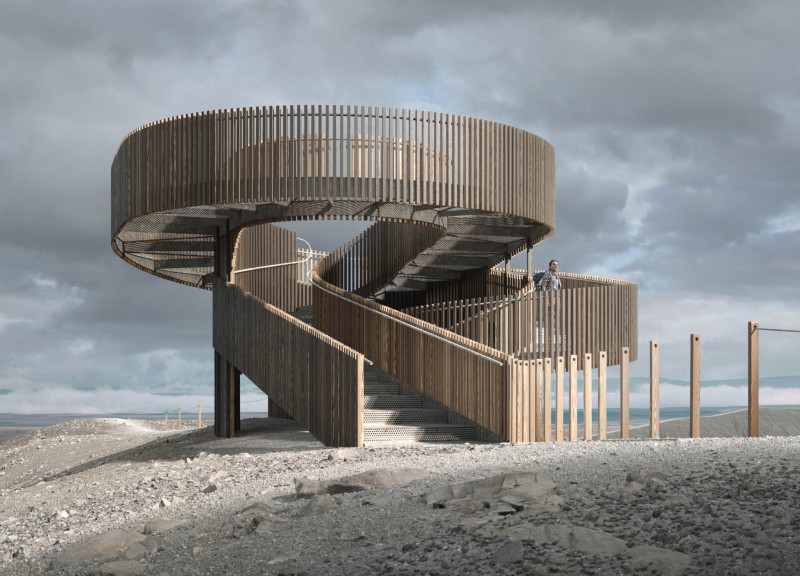5 key facts about this project
The Hverfjall Lookout Point is located within a unique volcanic landscape, defined by its dramatic terrain and geological features. It serves as a destination for visitors, enhancing their experience of the crater while blending into the environment around it. The design is centered on creating a pathway that curves around the crater, encouraging exploration and providing clear views of the striking landscape.
Structural Composition
The main structure utilizes galvanised steel, forming a framework that can be assembled on-site. This choice of material ensures precision and stability, accommodating the natural shapes of the land. Timber is added in selected areas to provide additional support and to enhance the overall appearance of the design. This combination of steel and timber supports both functionality and a visual connection to the surroundings.
Aesthetic Considerations
The design features a thoughtful treatment of edges to create a gradient of tones. Lighter colors are revealed on the inner surfaces through sanding, contrasting with the darker outer edges. This tactic not only highlights the curves of the structure but also connects the built environment with the natural landscape. The interplay of light and shadows on these surfaces adds depth and interest to the views.
Accessibility and Navigation
User experience is an important focus in the design. The landing area measures 8.5m by 13.5m, providing a gentle transition for visitors. This design choice makes it easier to navigate, with a shallower staircase angle allowing for more comfortable movement. Such considerations ensure the lookout point can be enjoyed by a wide range of visitors, emphasizing inclusivity.
The pathway winds gracefully around the crater, inviting visitors to engage with the surrounding landscape. As they walk, they are presented with diverse vistas, making each step an opportunity to appreciate the natural beauty that defines the site.


















































